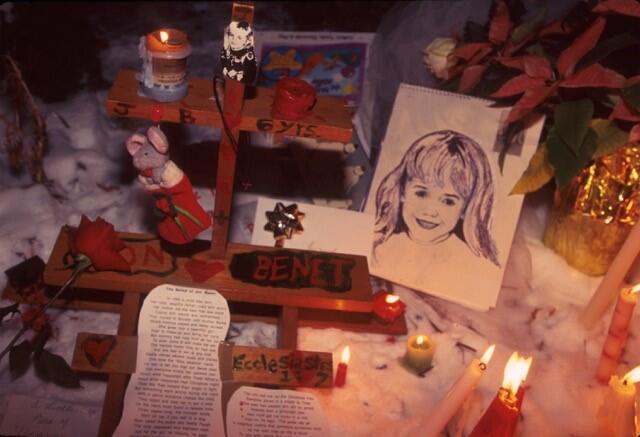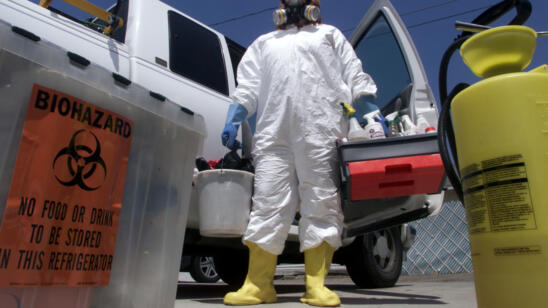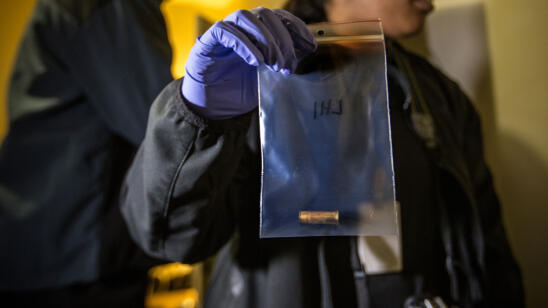There are no do-overs in crime scene processing. “You only get one chance to do it right,” says Joseph Giacalone, a professor in the Department of Law & Police Science at John Jay College of Criminal Justice. Giacalone, a former New York police sergeant who has worked on hundreds of murder, suicide and missing-person cases, says that securing a crime scene and properly collecting and storing evidence is crucial for prosecuting a court case.
While crime scenes are, by nature, porous—first responders may come in and out to help victims or secure the area—errors made at the beginning of an investigation can jeopardize prosecutions down the line. If the defense can get jurors to question a piece of evidence, and establish reasonable doubt, the accused may be one step closer to a not-guilty verdict. We looked at some high-profile cases where crime-scene glitches may or may not have tipped the scales of justice.
THE CASE: The murder case against O.J. Simpson has been called a textbook example of what not to do for forensic workers. The victims were Simpsons’ ex-wife, Nicole Brown Simpson and her friend Ronald Goldman. They were found dead outside of Brown’s condo in 1994. After Simpsons’ acquittal, mistakes in the ultra-high-profile case by the LAPD Scientific Investigation Division reportedly prompted a department overhaul.
The mess-up: A sock collected from Simpson’s bedroom was found to have blood smears, after two months in the lab, calling into question when the blood got on the sock.
The result: Because of the delay in noticing the blood, defense experts were able to suggest that the blood could have gotten there when the socks were lying flat and not when being worn by O.J.
The mess-up: A police detective drew a vial of blood from Simpson the day after the killings. Instead of logging it into the system, he put it in his pocket and went to the crime scene.
The result: Crime-scene security is tighter now, and a police officer would not be allowed back into a secured crime scene while carrying a piece of evidence. Forensic analysts also started taking more detailed notes, so the analysis process wouldn’t depend on potentially faulty memories. And the LAPD lab now uses bar codes to scan and track individual pieces of evidence.
The mess-up: A pair of bloody gloves were recovered—one at Simpson’s estate and one at the Brown residence. While forensic technicians were said to have improperly packaged evidence and then left it in a hot car, it is unclear whether these pieces were actually mishandled, or if the shrinkage was inevitable due to the blood on them.
The result: When Simpson tried on the leather gloves in court, over a pair of latex gloves, they seemed not to be the right size. The prosecution contended that the blood-drenched gloves had shrunk. Defense attorney Johnnie Cochran famously said, “If it doesn’t fit, you must acquit.” The prosecution brought in an expert, Richard Rubin, who testified that moisture had caused the gloves to shrink nearly a full size and lose elasticity.
THE CASE: Six-year-old JonBenét Ramsey was found dead in the basement of her family home on December 26, 1996. The unsolved murder case continues to captivate the crime-obsessed. Former Boulder, Colorado police chief Mark Beckner said in an interview on Reddit that many mistakes were made in the initial investigation.
The mess-up: Shorthanded due to the Christmas holidays, police did not immediately secure the Ramsey home and family friends were allowed to enter. Beckner admitted during the interview that evidence was compromised because of the unsecured scene.
The result: No one has ever been charged with the crime, although that may or may not have anything to do with the bungled crime scene.
The mess-up: John Ramsey found his daughter’s dead body in the basement and allegedly moved it before the FBI investigator could see it. Detective Linda Arndt, who was on the scene, claimed that Ramsey said he would search the house top-to-bottom with a friend. He and the friend went to the basement and shortly thereafter, the father returned carrying his daughter’s tiny corpse, which he laid on the living room floor.
The result: Moving the child’s body made piecing together the crime scene and chronology more difficult, said former FBI Agent Ron Walker in a TV interview.
THE CASE: On July 9, 2008, NYPD Officer Russel Timoshenko was shot in the head when he and his partner pulled over an SUV in Brooklyn. The officer died a few days later. Three suspects were tried—Robert Ellis was found guilty of three charges of gun possession; Dexter Bostic received a life sentence for aggravated murder; and Lee Woods, after one mistrial, was also sentenced to life in prison with no parole.
The mess-up: The crime-scene unit reportedly did not find a bullet fragment in the suspects’ stolen SUV. It was reportedly found when investigators hired by the suspects inspected the car. When crime-scene investigators re-examined the vehicle, even more ballistic remains were reportedly found.
The result: While the Brooklyn D.A.’s office reportedly said that these glitches didn’t jeopardize the case, then-police commissioner Raymond Kelly hired an outside expert to audit the NYPD’s crime-scene unit. After the results were announced, Kelly shifted control of the NYPD’s forensic division to a new deputy commissioner.
THE CASES: A Houston crime-scene investigator was found to have made errors in 65 cases dating back to 2015. Officer Justin McGee was reportedly removed as a crime-scene investigator after the results of an audit by the Houston Forensic Science Center.
The mess-ups: A review of 88 of his cases found that 65 had incomplete documentation, 32 had administrative errors, and in eight cases, evidence had been misplaced. The cases were reported to include homicide investigations and officer-involved shootings.
The result: The errors, according to the auditor, was due to a lack of training and attention to detail. An article on Houston’s ABC 13 News website stated that most of the related cases are still pending, and have not gone through the courts. Defense attorneys are reportedly looking for errors.
Related Features:
Is the Murder of JonBenet Ramsey Tied to the Killing of Two Other Young Girls?
Madeleine McCann Case: Over 10 Years Later, What Went Wrong?
JonBenet Ramsey: The Murder That Won’t Let Us Go
10 Biggest Revelations from George and Cindy Anthony on ‘Casey Anthony’s Parents Speak’



